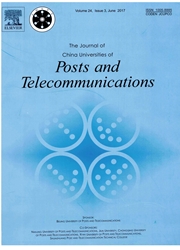

 中文摘要:
中文摘要:
散布的宽感觉的静止 Uncorrelated (WSSUS ) 模型长被看作了一个基本隧道模型描述褪色散隧道。但是非 -- 当有宽带的无线活动隧道被学习与时, WSSUS 模型有更通用的适用性更好并且繁殖环境的更多的详细知识。那么四 -- 隧道的尺寸(4-D ) 特征,也就是时间, lag,频率,和 Doppler,应该一起被学习。Inthis 纸,时间频率(TF ) 领域的 Wigner-Ville 分发被介绍分析发生光线与对方一起非静止、相关的在隧道。根据发生光线的不同行动模式, Severalchannel 模型分别地与变化时间的 Doppler 移动被设计, 4-D 本地人散布功能(LSF ) 被计算并且模仿。Oursimulation 结果为发生光线的一些对称、周期的行动模式显示出 LSF 现在的不对称、非周期性的 TF 分发。
 英文摘要:
英文摘要:
The Wide-Sense Stationary Uncorrelated Scattering (WSSUS) model has long been viewed as a basic channel model to describe the fading dispersive channel. But non- WSSUS models have more universal applicability when the wireless mobile channel with broadband is studied with finer and more detailed knowledge of propagation environments. So the four-Dimension (4-D) characteristics of channel, namely time, lag, frequency, and Doppler, should be studied together. In this paper, Wigner-Ville distribution of Time-Frequency (TF) domain is introduced to analyze channel in which the incidence rays are non-stationary and correlated with each other. Several channel models, according to different move modes of incidence rays, with time-varying Doppler shift are designed and 4-D Local Scattering Function (LSF) are computed and simulated respectively. Our simulation results show the LSF present asymmetric and non-periodic TF distri- bution for some symmetric and periodic move modes of incidence rays.
 同期刊论文项目
同期刊论文项目
 同项目期刊论文
同项目期刊论文
 期刊信息
期刊信息
